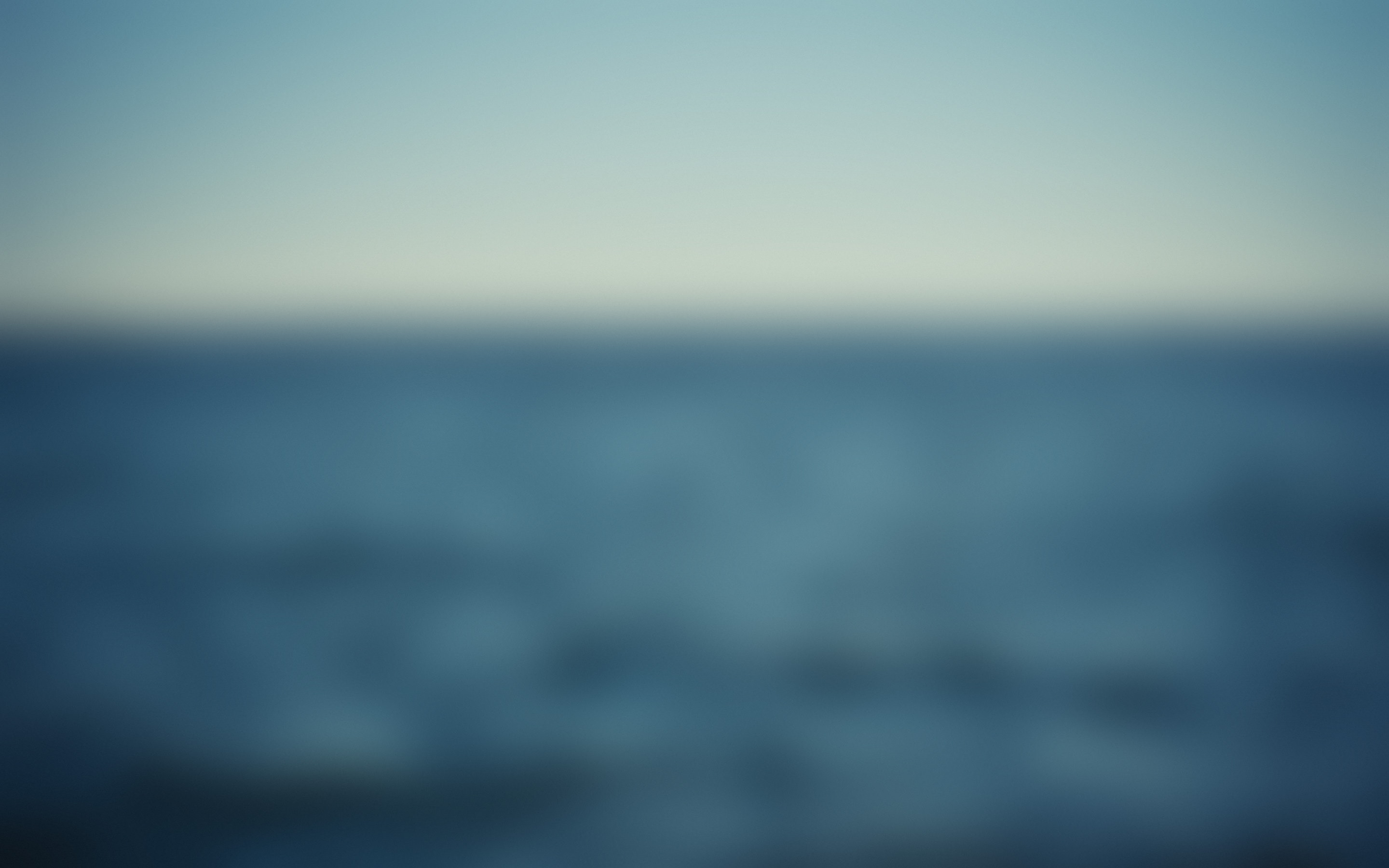Junkers Ju88
see also:
Junkers Ju88 Production List / Junkers Ju88 Survivor List / Junkers Ju88 Philatelic Items / Junkers Ju88 Model Kits
bomber, night fighter, observer aircraft, F/F: 21.12.1936
cantilever monoplane, smooth metal, designed by Zindel, Evers and Grassner
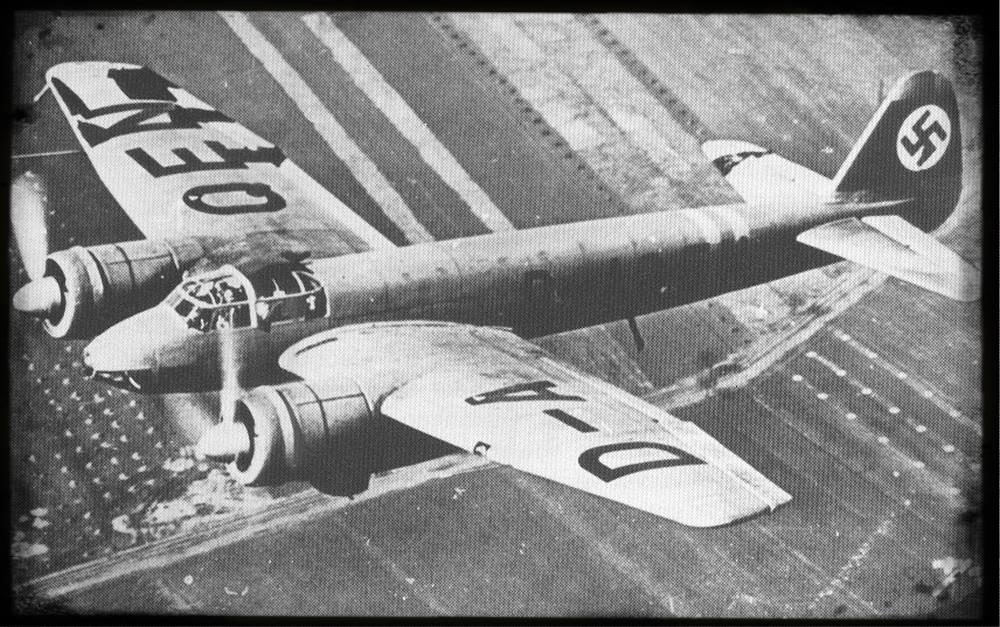
Junkers Ju88V1 Prototype
The Junkers Ju88 was one of two designs, which were developed according to the third RLM request of 1935 for a quick bomber aircraft. The developement was started under the designator EF59. Parallel designs for the RLM request were the Henschel Hs127 and the Messerschmitt Bf162. The developement started in January 1936 by Zindel, Evers and Gassner. Two principle designs were investigated, one as the Ju85 with a double tail unit and a second as Ju88 with an unconventional single tail unit. While the RLM initially favorized the double tailed Ju85, later on the more modern Ju88 design was promoted and the Ju85 studies were stopped.
The prototype construction of the Ju88 began in May 1936 and on December, 21st 1936 Kindermann performed the first flight with the Ju88V1 D-AQEN. A total of 5 initial prototypes were built. The initial three Ju88 prototypes had the same front and wing design as the initial Ju85 mockups, which just differed in the double tail from the Ju88 prototypes. One of these prototypes, the Ju88V5 was a civilized Ju88 and it was used for several speed record flights, which had been registered by FAI:
19.03.1939 517,004 km/hr over a 1000km distance, 2000kg payload
30.06.1939 500,786 km/hr over a 2000km distance, 2000kg payload
In 1937 the RLM request was changed into an optional dive bomber design. Also the Ju88 should be optimized for maximum payload or maximum range either. The Ju88V6 was the first prototype, which was built according to this new request. It flew first on June 18th 1938. In autumn 1938 the RLM decided, that the Ju88 would become the new standard bomber equipment of Luftwaffe. The RLM asked for a large serial production line of that aircraft with a maximum monthly production rate of 300 aircraft. Therefore Junkers distributed the Ju88 production around Germany's aircraft production facilities:
Group 0:65 aircraft per month
Junkers Aschersleben for fuselage
Junkers Halberstadt for wings
Junkers Leopoldshafen for tails
Junkers Bernburg for final assembly
Junkers Schoneberg and Dessau metal works
Group 1: 80 aircraft per month
AEG for the tail unit
Arado for the wings
Henschel for the fuselage and engine mountings
Group 2: 70 aircraft per month
Heinkel Oranienburg for the wings
Dornier Wismar for fuselage and tails
Group 3: 35 aircraft per month
Dornier Friedrichshafen for wings, fuselage and tail
Group 4:50 aircraft per month
ATG for fuselage and tail
Siebel for tail and wings
Engine Production: 730 engines per month
Junkers Koethen, 250 Junkers Jumo 211B
Junkers Magdeburg, 200 Junkers Jumo 211B
Junkers Dessau, 30 Junkers Jumo 211B
Pomo, 50 Junkers Jumo 211B
Mimo, 200 Junkers Jumo 211B
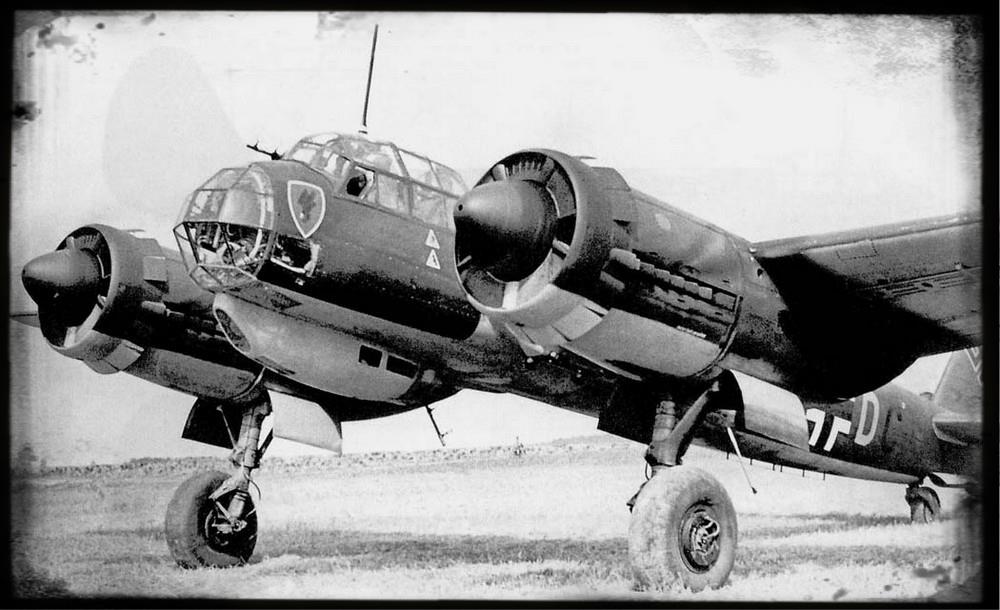
Junkers Ju88-A1 (Horizontal and Dive Bomber)
The setup of this distributed production was started in late 1938. But it took until 1940 to start the mass production of the Ju88. During the following 6 years a total of 15000 Junkers Ju88 were built. Therefore the Ju88 became the most built Junkers aircraft type. A total of 3000 changes were incorporated into the serial production of this aircraft and dozens of subtypes were developed through the years, which made the Ju88 useable as a bomber, fighter and surveyer aircraft.
The standard bomber version of the Ju88 was built as the A-series. Preproduction was started in 1938 with 8 Ju88A0. About 20 of the Ju88A2 were sold to Finland in 1939. The mass production of the Ju88 started in 1940 with the A4-series. About 17 major subtypes of the Ju88A were designed until the end of WWII. The A-series were used as bomber and reconaissance aircraft. Several modifications were performed during the series production of the A4. The undercarriage was strengthened, the wing span was extended from the standard 18.37m up to 20.08m. Also the defeat weapons were extended and the operating weight was increased. The Ju88-A13 was used for ground attacks and got a stronger floor armour and the Ju88-A17 was a test version of a torpedo bomber.
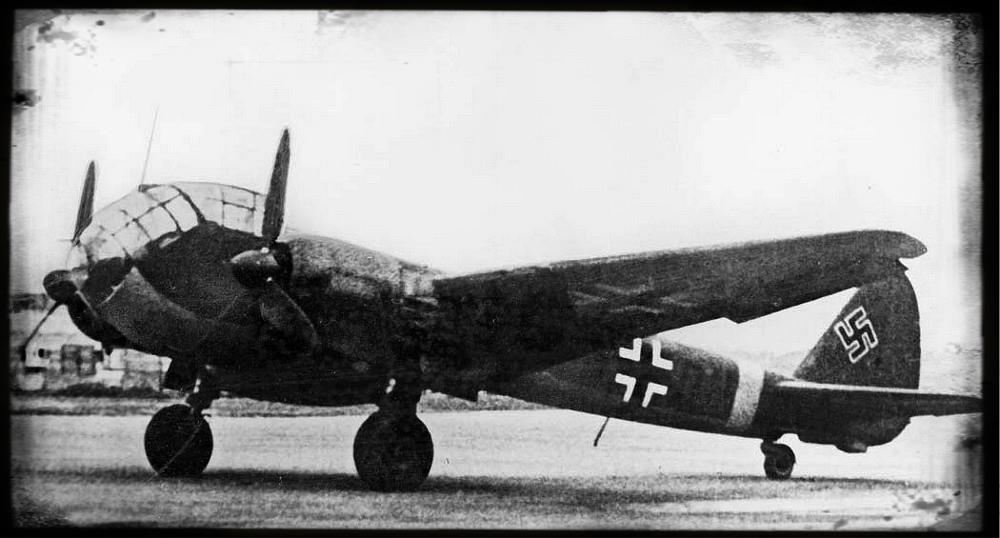
Junkers Ju88-B0
The B-series was developed for increased range, higher speeds and additional military payloads in 1940. The nose section of the B-series was completely changed by an all-glased cockpit and nose section. Subtypes were designed as bomber, surveyer and destroyer aircraft. Only a few Ju88Bs were built as the RLM decided to continue the Ju88A mass production and the modification of the production facilities for the Ju88B was to complex. Instead of the Ju88B the RLM promoted the Junkers Ju288, which was in principle based on the Ju88, but which was also a complete new design and construction. Later on, when the RLM realized, that the development of the Ju288 would be late, the Ju88B was used as the basic platform for the further improved Ju188, which should be an intermediate step until the Ju288 became available.
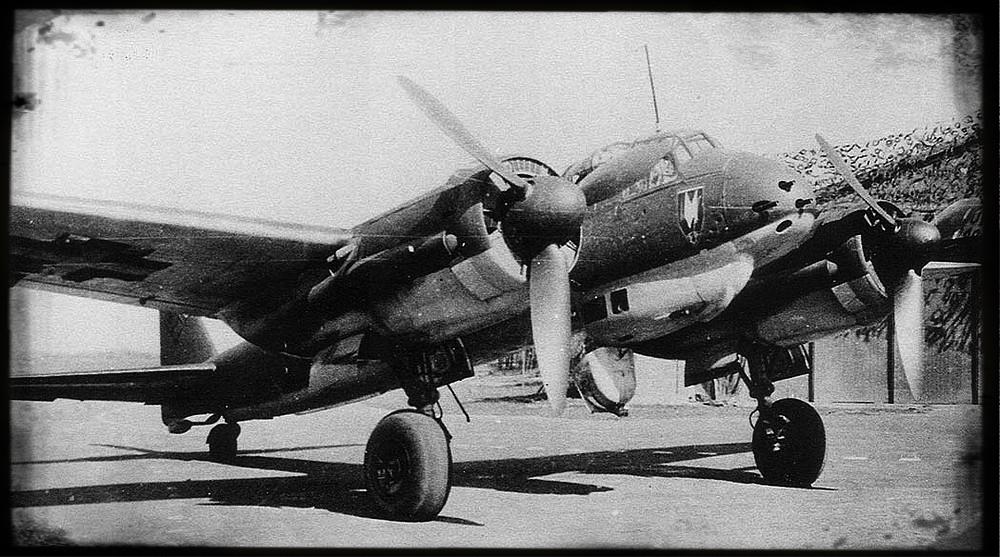
Junkers Ju88-C6
The C-series, also known as the Z-series was the destroyer and night fighter version of the Ju88 since 1938. This series was developed from the Ju88-V7 and was principly based on the A-series. Instead of the glased nose section of the A-series, the C-series got a metal nose section and a remote machine gun at the rear tail unit. The C2/C3 were used as "Jabos" and got bomb mountings plus machine guns in the nose section. The C6 was used as a day and night fighter version and was equipped with radar systems, as well as with additional remote machine guns at the rear of the cockpit cabin.
The D-series was built since 1940 as a strategic reconaissance aircraft. Most Ju88Ds were rebuilts of Ju88A aircraft, where the dive brakes were dropped and the bomb compartment was filled with fuel tanks. 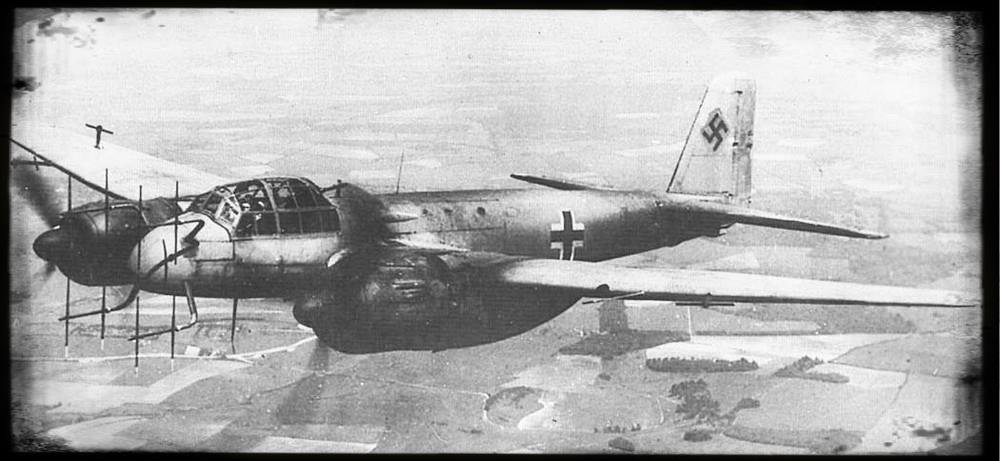
Junkers Ju88-G1 Night Fighter
The H-Series was started in 1943 as long range surveyer aircraft. The H1-series was based on the D1 with an extended fuselage length of 17.88m. It had a range of 4700km. Just ten aircraft were built. The H2-series were based on the G-series and was originally projected as G10. A total of 20 H2 aircraft were ordered, however it is unclear if one was built.
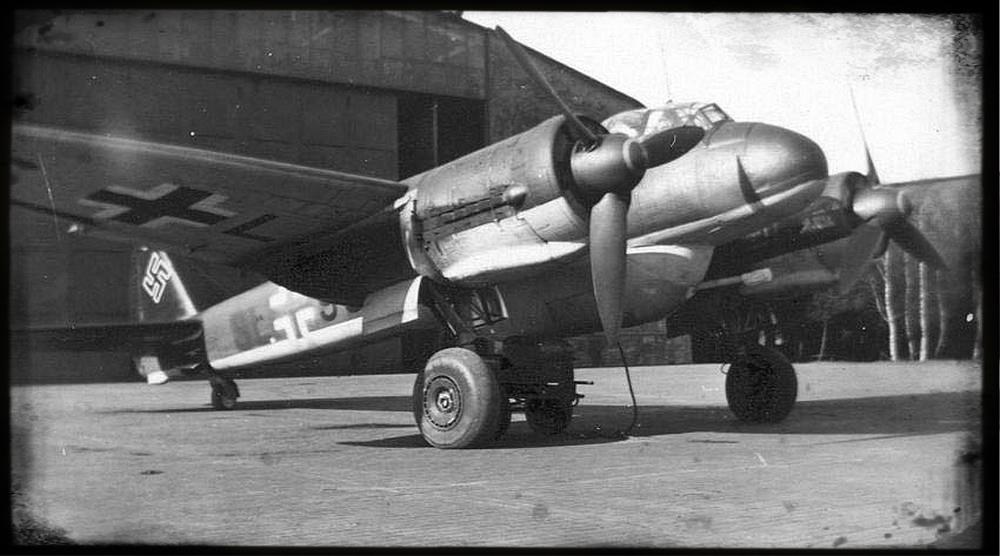
Junkers Ju88-P2 Battle Aircraft
The N- and P-series were only built in small numbers. They were designed as tank attack aircraft due to the request of the Eastern front in 1942 and were equipped with heavy tank canons. Severe problems during the design and test resulted from the canons, which cause structural cracks in the front nose and the propellers. Therefore the smaller BK3,7 canons were mounted, which were already used at the Ju87-G. Due to the structural additions the P1/P2 became to slow, therefore the stronger Jumo 211J was added to the P3, which finally was delivered to the front troops for test flights. Some of these aircraft were also transfered to fighter units at the West front. But due to the heavy canons these aircraft offered bad flight performances.
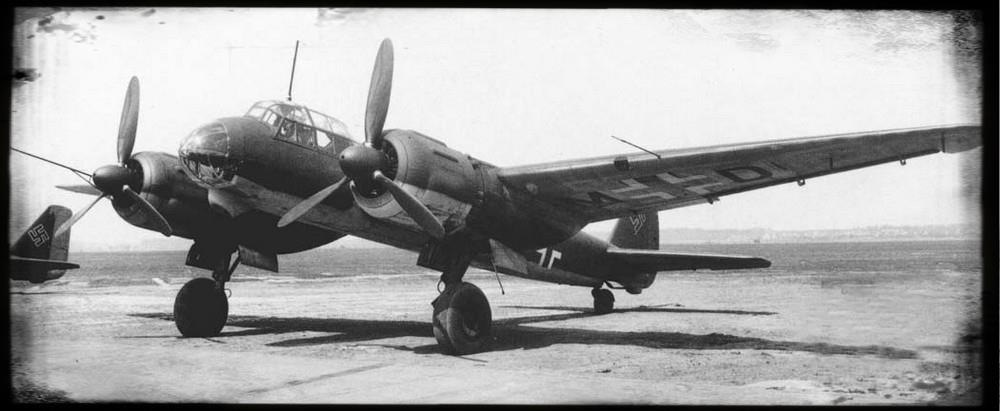
Junkers Ju88-S1
The S-series was developed since 1942, when the RLM asked for better speed performance of the Ju88 bombers. Based on the A4-series, the S-series got a new aerodynamical spheric glased nose section. The Ju88S prototype was compared with the Me410, the Arado Ar240 and the Heinkel Ke219 at Rechlin in 1943, but it was unable to reach the performance of the other competitors. Nevertheless about 40 Ju88S were rebuilt from Ju88-A4s. The T-series were the surveyer derivate of the S-series. A small production was started at Henschel at Schonefeld in autumn 1944, but shortly afterwards ceased in advance of the Messerschmitt Me410. 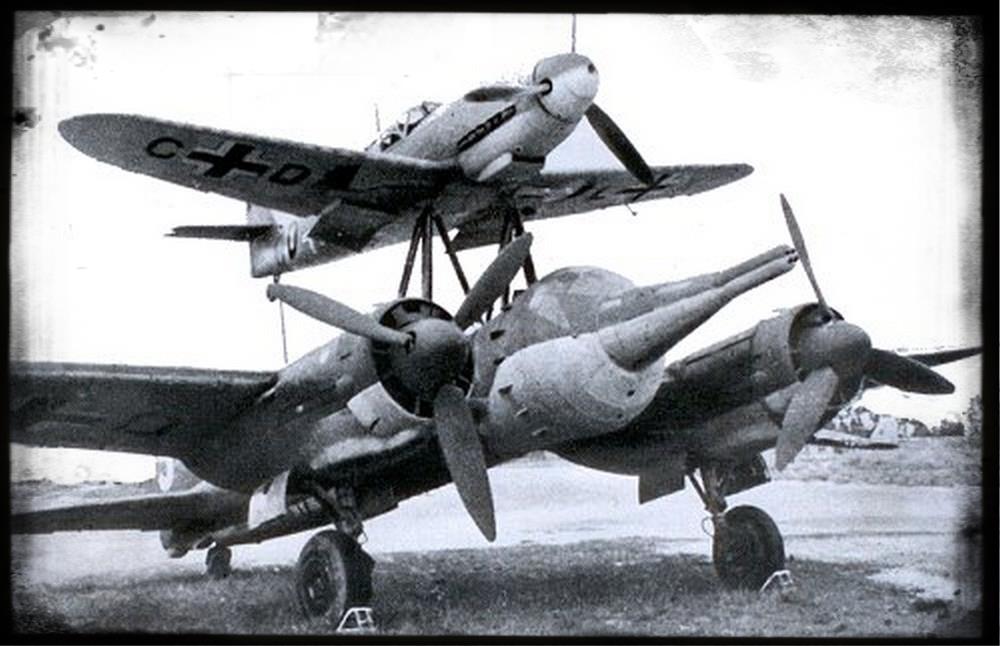
Junkers Beethoven-Gerät S1
Junkers Ju88 plus Me109
In 1944 the RLM asked Junkers for the development of the combination of a small fighter aircraft, which was packed on the top of an unmanned heavy bomber aircraft. This socalled Mistel construction was flown to the target, where the pilot of the fighter aircraft dropped the bomber, which was filled with explosive materials, while the pilot himself returned with the fighter aircraft. The construction of the Mistel was designed by Fritz Haber. He used several old Ju88A4, G- and H-series for the remote bomber unit, which was called the Beethoven unit. These Beethoven units were coupled with Messerschmit Bf109Fs or Focke Wulf Fw190As. About 85 Mistels were built until the end of the war. Only a few missions were flown, i.e. some missions were performed to destroy the Oder bridges in early 1945. Nevertheless, about 50 Mistel units were captured by the Allies at the end of the war. Another Mistel design of Junkers was the Ju268 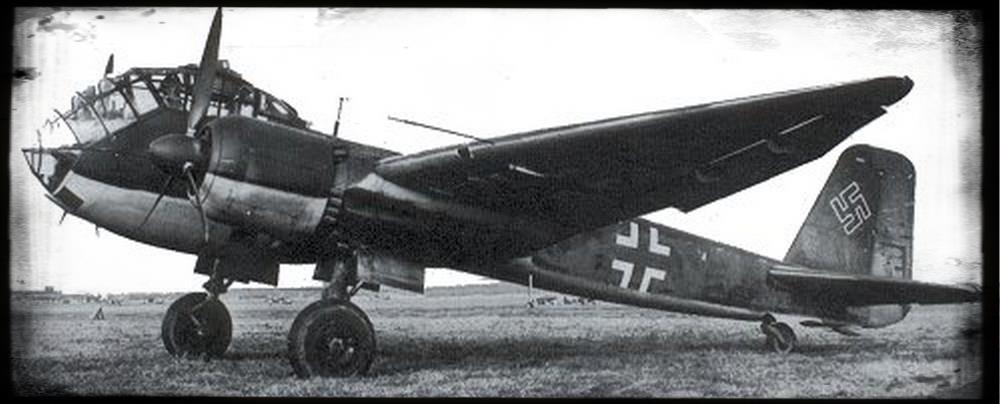
Junkers Ju188-E1
with BMW801ML in Spring 1943
As early as 1939 the RLM became interested in a further improved bomber aircraft. The RLM asked for proposals for the socalled "Bomber B Program". Prof. Hertel himself started the developement of the Junkers Ju288 due to that request. The Ju288 itself was a complete independent developement of the Ju88. When it became obvious, that the time frame for the Ju288 developement, which should have been finished in May 1942, was not reachable, the RLM asked Junkers for further improvements of the Ju88. For these improvements Zindel went back to the Ju88B/E design. In principle Zindel just took the forward fuselage section from this design and added a new wing and a new tail unit. This new design was first designated as Ju88E, but later changed to Junkers Ju188E. On June 24th 1942 the first Ju188V1 was flown by Wendel. In 1943 an initial series of 10 Ju188-E0 were delivered to Rechlin for flight tests. Like the Ju88B and E, the initial Ju188E was also equipped with 2 x 1170kW BMW801ML engines as the projected Jumo 213 still was not available in 1943.
The serial production of the Ju188 started with the A-series bomber in summer 1943. The A-series was the first Ju188 to be equipped with the Jumo 213A1. The A1 was designed as a dive bomber, but this design was rejected by RLM due to the increased ground defense of the Allied forces. The A2 became the horizontal bomber version of the Ju188, while the A3 was designed as a torpedo bomber.
The Ju188 surveyer version was also derived from the Ju88B/F versions and the early serial production aircraft were designated Ju188F. Like the Ju188E these surveyers were also equipped with the BMW801D2 engines. The serial production of the Ju188 surveyers were continued as the D-Series, which was in principle an Ju188-A2 without bomber equipment. In 1943 the Ju188D took over the role of the standard surveyer from the Ju88-series, while the Ju88 was more focused on the fighter position.
The Ju188 production was set up at Junkers Bernburg, while Siebel and ATG were subcontractors. The production of 71 Ju188-G2s was planned at the Volkswagen Werke in Braunschweig by September 1944. But this type was finally dropped by RLM in June 1944 to concentrate the developement activities.
Several other designs of the Ju188 were developed at Junkers. The Ju188C was equipped with a remote controlled tail gun. Further developments of this tail gun version were the Ju188G and Ju188H. None of these subtypes were built. The Ju188R was designed as a night fighter with four 20 mm canons and the Ju188S was a high altitude bomber, while the Ju188T was a high altitude surveyer. Before one of these designs was built, the RLM decided to concentrate on three Ju188 designs. These were the Ju188J (destoryer and night fighter), the Ju188K (bomber) and the Ju188L (surveyer). These three designs were included in the socalled "Hubertus-Programm". 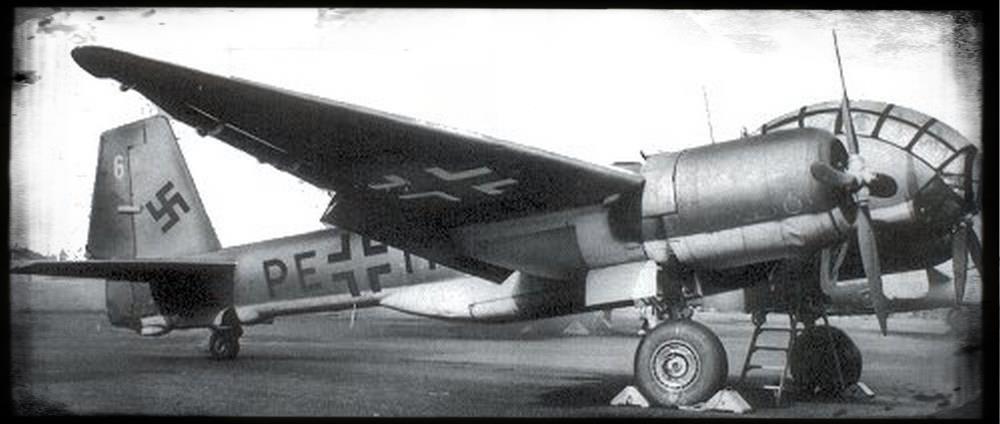
Junkers Ju188-K0 High Altitude Bomber
Within the "Hubertus-Programm" these three subtypes should be further developed for high altitude missions. The design was started under a new designator as Ju 388 in 1943. In contrast to the basic Ju88 design and to the Ju188, the Ju388 was never designed as a dive bomber. Its only purpose were the high altitude missions of 11000 to 12000 meters, where the Allied aircraft were not able to climb in 1944. The wings and the tail unit were taken from the Ju188 design, but the forward fuselage was completely redesigned to pick up the pressured cockpit section. Deliveries of the Junkers Ju388 started in summer 1944. 
Junkers Ju188-J Night and Day Fighter
The Ju388K bomber and the Ju388L surveyer were equipped with complete glased cockpit nose section, while the Ju388J night fighter got a metal nose section like the Ju88G. The Ju388J was equipped with the Lichtenstein SN2 radar system, the socalled "Hirschgeweih". All Ju388 were equipped with the BMW801TJ high altitude engine. Jumo 213 and Jumo 222 were projected, but were just used on the Ju388 for tests. Serial production of the Ju388 started in 1944 at Bernburg. A total of 102 aircraft were built until the end of WWII, most of them were rebuilt from Ju188Es. This makes the Ju388 the largest fleet of high altitude aircraft built in Germany during WWII. A lot of Ju388 were captured by the Allied at the end of WWII. Most of them were destroyed or scrapped and a sole Ju388 remained until today at the National Smithonian Museum and awaits its public appearance. 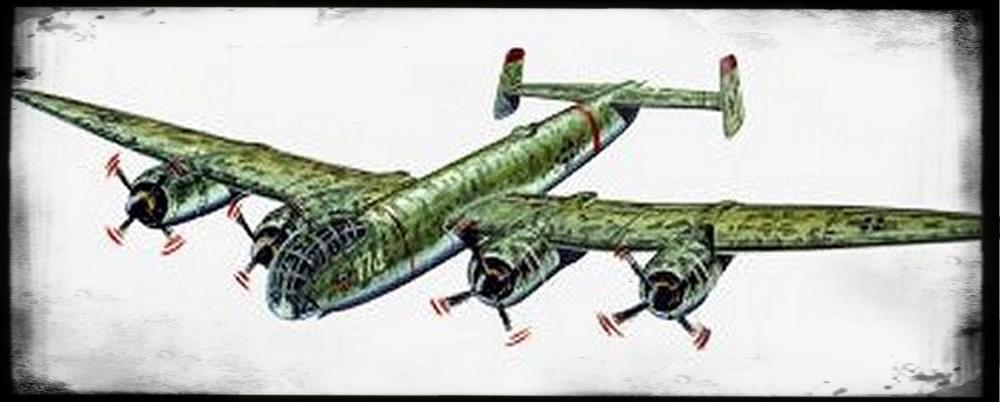
Junkers Ju488 Bomber
(from: Herwig/Rhode "Geheimprojekte der Luftwaffe")
Another developement of the Ju88-family was the Ju 488. This project was started in late 1943, when the developement of the Heinkel He177 did not come to a successfull end. Junkers purposed a four engined high altitude bomber and survey aircraft based on components of the Ju88-family. The forward fuselage and the undercarriage were taken from the Ju388 design. The tail unit was taken from the Ju288. The wing was also taken from the Ju388 and an additional center wing section with engine was added. The fuselage was lengthened. The further developement of the Ju488 was transfered to Latecore in Toulouse, where Muttray became the project manager. Two prototypes were built at Toulouse during 1944 and a further four were on order by the RLM. The serial production was planned for summer 1945.
In July 1944 the first two prototypes were destroyed by Resistance sabatoage action, shortly before they became ready for the first flight. Nevertheless the developement was continued until November 1944, when the RLM stopped the Ju488 work in advance to the fighter programme. It seems, as if the construction plans should have been transfered to Japan, but this was not realized until the end of WWII.
The Ju488 marked the end of the development line of the Ju88-Ju188-Ju388-Ju488 family line. The Junkers Ju288 was an independent developement. It does not belong the Ju88-family tree.
Technical Data:
| Aircraft | year | engine | length in m | span in m | wing area im sqm | net weight in kg | payload in kg | seats | speed in km/h | range in km |
|---|---|---|---|---|---|---|---|---|---|---|
| Ju88A0/A1/A2/A3 | 1938/39 | 2 x Jumo 211B1/G1 (882kW) | 14,36 | 18,38 | 52,50 | 7600 | 5000 | 4 | 450 | n.a. |
| Ju188A | 1943 | 2 x Jumo 213A1 (1290kW) | 15.06 | 22,00 | 56,00 | n.a. | n.a. | 4 | 530 | n.a. |
| Ju388J1 | 1944 | see below | 15,20 | 22,00 | 56,00 | 10130 | 3140 | 4 | 620 | 2200 |
| Ju488 | 1944 | 4 x Jumo 222B3 (1840kW) | 23,25 | 31,30 | 88,00 | 21200 | 15000 | 3 | 544 | 2700 |
Subtype Description:
Ju88 A-Series (Bomber)
Ju88A0 horizontal and dive bomber with 2 x 882kW Jumo 211B-1, 8 built in 1938
Ju88A1 with 2 x 882kW Jumo 211G-1, 69 built in 1939
Ju88A2 as A1, to be started from catapulte, 20 built for Finland
Ju88A3 as A1, training aircraft
Ju88A4 with 2 x 1040kW Jumo 211J-1, dive bomber aircraft with larger wing since 1940, larger tail since 1942
Ju88A4trop as A4 for tropical regions
Ju88A5 as A1 with larger wing, 2 x Jumo211G, bomber and surveyer aircraft
Ju88A6 as A5 with balloon destroyer
Ju88A6U as A5 used as long range sea surveyer with 2 x 880kW Jumo 211H
Ju88A7 as A5, training aircraft with 2 x Jumo 211B1 or 211H
Ju88A8 as A4 with 2 x 990kW Jumo211F-1 and Kuto nose
Ju88A9 as A1 dive bomber for tropical missions (also known as Ju88A1trop)
Ju88A10 as A5 for tropical missions
Ju88A11 as A4 for tropical missions
Ju88A12 as A5 with larger wing and cockpit with 2 x Jumo 211G-1, training aircraft
Ju88A13 as A4, combat aircraft
Ju88A14 as A4 with larger wing, Kuto nose with 2 x 1040kW Jumo 211J-1, ship attacks
Ju88A15 as A4 with Jumo 211J-1 and bombs in a wooden bomb compartement below fuselage
Ju88A16 as A14, training aircraft
Ju88A17 as A4 with larger wing and 2 x Jumo 211-J1, torpedo bomber
Ju88 B-, E- and F-Series (Bomber/Destroyer/Surveyer)
Ju88B0 surveyer as A5 with 2 x 1150kW BMW801MA and new cockpit glas design, 10 built in 1940
Ju88B1 as B0 for destroyer missions with stronger weapons, only prototype built
Ju88B3 destroyer aircraft, only one built
Ju88E0 as B-series with stronger defense weapons, only prototypes built in 1942
Ju88E1 as B-series with BMW801ML, continued as Ju188E
Ju88F as B0-series, continued as Ju188F since 1943
Ju88 C-Series (Fighter and Destroyer)
The C-Series was also known as Z-Series (Zerstorer=Destroyer)
Ju88C0 destroyer night fighter, 2 x Jumo 211B-1 derivated from A1 (also known as Ju88Z, Ju88SA2)
Ju88C1 as C0 with 2 x Jumo 211G-1
Ju88C2 as C1 with larger wing and stronger weapons, 62 rebuilt from Ju88A1s in 1940, some with DB610
Ju88C3 night fighter with 2 x BMW801A, projected only, not built
Ju88C4 as C2 with radar equipment rebuilt from A5s since 1941
Ju88C5 night fighter with 2 x BMW801MA as C2, only few built
Ju88C6 heavy fighter, 2 x 1040kW Jumo 211J-1 as C1 with radar and stronger weapons
Ju88C6a day fighter version of C6
Ju88C6b night fighter version of C6
Ju88C6c
Ju88C7 destroyer aircraft with 2 x BMW801MA or Jumo 211J-1 with larger wing.
Ju88C7a destroyer with bomb payload 500kg
Ju88C7b increased bomb payload 1600kg
Ju88C7c fighter version
Ju88 D-Series (Surveyer)
Ju88D0/D1 surveyer aircraft with 2 x Jumo 211J-1 as A4 with radar equipment, 330 built since 1940
Ju88D2 surveyer aircraft as A5 with 2 x Jumo 211B-1 or G-1 with larger wing
Ju88D3 as D1 for tropical missions
Ju88D4 as D2 for tropical missions
Ju88D5 further development of D1 with 2 x Jumo 211J-1
Ju88 G-Series (Night Fighter)
Ju88G1 night fighter with 2 x 1250kW BMW801G-2, derivated from A4 (wing) and Ju188 (fuselage) in 1943
Ju88G2/G5 were not built
Ju88G6 night fighter with 2 x 1290kW Jumo 213A1 with better radar equipment and stronger weapons
Ju88G7 night fighter with 2 x Jumo 213A1 with FuG228 radar equipment, only prototype built
Ju88G10 night fighter with 2 x Jumo 213A1 with FuG240 radar equipment, only prototype built, also known as Ju88H2
Ju88 H-Series (Surveyer and Fighter)
Ju88H1 surveyer, 2 x 1250kW BMW801G as D-series with larger fuselage and radar, prototypes only
Ju88H2 long range fighter aircraft with 2 x BMW801G, prototypes only
Ju88H3 surveyer aircraft with 2 x Jumo 213A with longer fuselage than H1/H2, not built
Ju88H4 long range fighter aircraft with 2 x Jumo 213A and longer fuselage than H2, not built
Ju88 N- and P-Series (Tank Destroyer)
Ju88Nbwe ground support aircraft with flame canon, only 1 built from C4-series
Ju88P1 tank destroyer aircraft with 2 x 1040kW Jumo 211J1, derivated from A4 in 1942
Ju88P2/P3 as P1 with stronger attack weapons, prototypes only in 1943
Ju88P4 as P1 with stronger attack weapons since 1943, 30 built
Ju88 R-Series (Night Fighter)
Ju88R1 night fighter aircraft with 2 x BMW801MA derivated from C6 (also known as C6/R1)
Ju88R2 night fighter aircraft with 2 x BMW801G1 derivated from C6
Ju88 S-Series (Quick Bomber)
Ju88S0 quick bomber aircraft with 2 x 1250kW BMW801G2 with better aerodynamics since 1943
Ju88S1/S2 as S0 with modified bomb connectors
Ju88S3 with 2 x 1290kW Jumo 213A1
Ju88S4 as S3 with inside bomb compartement, only prototype built
Ju88S5 with 2 x Jumo213T, only prototype built.
Ju88 T-Series (Surveyer)
Ju88T1 surveyer aircraft with 2 x BMW801G2 derivated from S1
Ju88T3 surveyer aircraft with 2 x Jumo 213A1 derivated from S3, only projected.
Ju88Z destroyer series, built under designator Ju88C
Ju88 Mistel-Series
Mistel 1 combination of Ju88 and Me109F, for training, 12 built, also known as Mistel S1
Mistel 2 combination of Ju88G and Fw190A, 75 built
Mistel 3B combination of Ju88H and Fw190A
Mistel 3C combination of Ju88H/Fw190A, Ju88 with dropable center gear for better take off performance
Ju188 Series:
Ju188A0 horizontal bomber aircraft with 2 x 1285kW Jumo213A1, further development of E-series since 1943
Ju188A1 dive bomber as A0, not built as dive bombing program was stopped
Ju188A2 horizontal bomber aircraft as A0 since 1944
Ju188A3 torpedo aircraft as A1, improved E3
Ju188C0 with remote backward Mgs as A1, only prototypes built
Ju188D1/D2 long distance surveyer as A1, built since spring 1944
Ju188E0 initial prototypes with 2 x 1250kW BMW801G2 derivated from Ju88E, 10 built
Hu188E1 as E0 with 2 x 1270 BMW801D2
Ju188E2 torpedo aircraft as E1
Ju188F1/F2 surveyer aircraft as E1 with radar equipment
Ju188G0/G2 bomber aircraft as E1, only prototypes built
Ju188H2 surveyer aircraft as E1, only projected, not built
Ju188J projected destroyer and night fighter with pressured cabin, built as Ju388J
Ju188K projected bomber with pressured cabin, built as Ju388K
Ju188L projected surveyer with pressured cabin, built as Ju388L
Ju188R0 night fighter aircraft, as E1, only prototypes built
Ju188S1 high altitude bomber with 2 x Jumo213E1, only few built
Ju188T1 surveyer aircraft as S1
Ju388 Subtypes:
J-Series (Day and Night Fighter)
Ju388J1 with BMW 801J0 (1330kW, destroyer and night fighter
Ju388J2 with 2 x Jumo 222A/B (1470kW), destroyer and day fighter, also night fighter, projected
Ju388J3 with 2 x Jumo 213D, day and night fighter, no serial production until end of WWII, projected
K-Series (Bomber)
Ju388K1 with BMW801J0 and BMW801G
Ju388K2 with Jumo 222A/B, later also Jumo 222E/F, projected
Ju388K3 with Jumo 213E, projected
L-Series (Surveyer)
Ju388L1 with BMW801J0 and BMW801G, long range surveyer, 3 seats
Ju388L2 with Jumo 222A/B, later Jumo 222E/F, projected
Ju388L3 with Jumo 213E, projected
Ju388M as J with 4 seats in cockpit, torpedo bomber
Ju488 four engined, strategic bomber
Weblinks:
- Airwar.ru - Junkers Ju88 Prototypes
Airwar.ru - Junkers Ju88-A1 Story, Photos, Drawings, Data
Airwar.ru - Junkers Ju88-A4
Airwar.ru - Junkers Ju88-C
Airwar.ru - Junkers Ju88-D
Airwar.ru - Junkers Ju88-G
Airwar.ru - Junkers Ju88-R
Airwar.ru - Junkers Ju88-S
Airwar.ru - Junkers Ju88-T
Airwar.ru - Junkers Ju88 Beethovengerat (Mistel) - Airwar.ru - Junkers Ju88 Losses in Russia 1941
Airwar.ru - Junkers Ju88 Losses in Russia 1942
Airwar.ru - Junkers Ju88 Losses in Russia 1943
- Wikipedia.org - Ju88 General Story, Photos
- Weltkrieg2.de - Ju88 Story, Production
- Aeroflight.co.uk - Ju88 Series and Production
- Lexikon-der-Wehrmacht.de - Ju88 Story and Production
- WorldWarPhotos.info - Ju88 Photo Library
- WarbirdResourcegroup.org - Ju88 Story, Data, Photos, OPS
- GreyFalcon.us - Ju88 Mistel Story
- Ju388.de - explcit Junkers Ju388 Site (Christoph Vernaleken)
- Luft46.com - Junkers Ju488 Story, Photos
- Youtube.com - Deutsche Flugzeuge im 2. Weltkrieg - Ju88 (Documentary)
Youtube.com - Wings of the Luftwaffe: Ju88 Schnellbomber
Youtube.com - Junkers Ju88 Operatopm
Literature:
-
M. Griehl
Junkers Ju88 - Star of the Luftwaffe
Arms & Armour Press, Sept 1990 ISBN: 1 85409 043 7 -
Ron Mackay
Junkers Ju 88
Crowood Press, Oct 2001 ISBN: 1 86126 431 3 -
Joachim Stein
Junkers Ju 88 Over All Fronts
Schiffer Publishing, 1991 ISBN: 0 88740 3123 -
Brian Filley
Junkers Ju 88 In Action Vol 2: Aircraft in Action No.113
Squadron/Signal Publications, July 1991 ISBN: 0 89747 258 6 -
Alfred Price
The Junkers Ju 88 Night Fighters: Profile No.148
Profile Publications Ltd, 1967 ISBN: n/a -
Jerry Scutts
German Night Fighter Aces Of World War 2
Osprey Publishing, 1998 ISBN: 1 85532 696 5 -
Theo Boiten
Nachtjagd-The Night Fighter Versus Bomber War Over The Third Reich 1939-1945
Crowood Press, June 1997 ISBN: 1 86126 086 5 -
H. Erfurth
Vom Original zum Modell: Junkers Ju88
Bernard + Graefe Verlag, 1998, ISBN 3-7637-6014-8
Vom Orignal zum Modell: Junkers Ju188
Bernard + Graefe Verlag, 2002, ISBN 3-7637-6026-1 -
R. Forsyth
Mistel: German Composite Aircraft
Classic Publications, 2002, ISBN 1903223091
introduced Jul 1996, transfered Aug 2017
http://hugojunkers.bplaced.net/
contents last updated 9 Jun 2003
